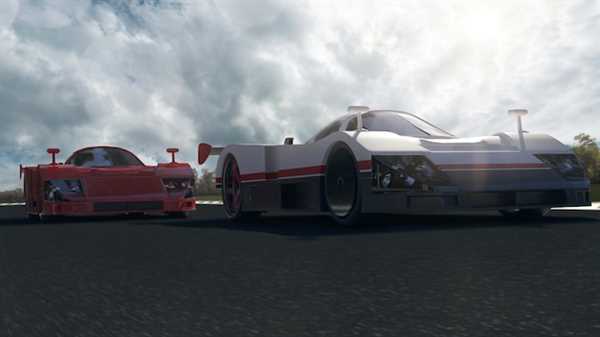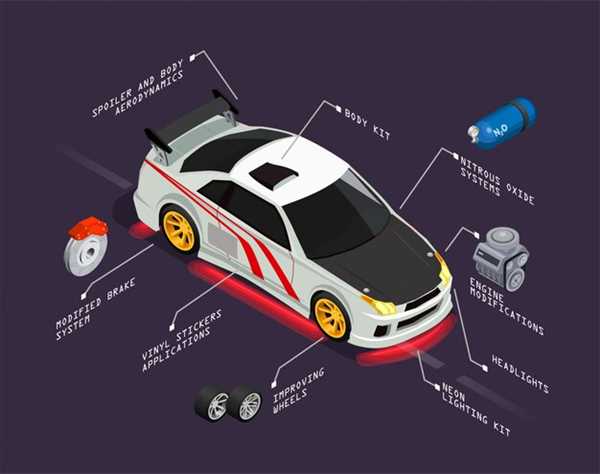
To maximize speed and control, consider incorporating advanced designs that optimize airflow. Reducing drag and increasing downforce is crucial for achieving superior stability during high-speed maneuvers. Utilizing components such as front splitters, rear wings, and side skirts can significantly affect the handling characteristics of your vehicle.
Investing in lightweight materials plays a key role in refining the vehicle’s overall dynamics. Carbon fiber and composite options not only reduce mass but also improve structural integrity. The balance between weight reduction and strength is imperative for maintaining high performance on the track.
Testing and fine-tuning are essential steps in this process. Utilizing wind tunnel simulations and on-track data collection can provide insights into the effectiveness of modifications. This analytical approach enables precise adjustments to be made, ensuring that every aspect of the vehicle is optimized for competition.
Key Components of Aerodynamic Kits for Racing Cars
Consider incorporating front splitters to enhance downforce and minimize front-end lift. These elements direct airflow, increasing stability during high-speed maneuvers.
Utilize rear wings designed for adjustable angles, which allow for optimal performance across diverse track conditions. Properly positioned, they generate significant downforce while maintaining a balance between drag and grip.
Implement side skirts to prevent airflow from flowing under the vehicle. This modification reduces lift and enhances cornering capabilities, ensuring better traction through bends.
Incorporate diffusers at the rear to improve underbody airflow. These components accelerate exiting air, increasing overall downforce while reducing drag, making the ride more stable.
Consider customizing the vehicle’s body panels, like deployable spoilers that automatically adjust based on speed. This innovation maximizes downforce when needed and minimizes drag in straights.
Utilizing canards at the front aids in directing airflow around the car, providing additional downforce and enhancing front-end grip during aggressive cornering.
In addition, modifying the wheel arches can prevent turbulence caused by spinning tires, improving airflow around the vehicle and enhancing overall aerodynamic continuity.
Continually testing various configurations of these elements on the track will ensure fine-tuning to achieve the best possible results for specific racing conditions.
Measuring the Impact of Aerodynamics on Lap Times

The correlation between air dynamics and lap durations is measurable through precise telemetry. Start by equipping vehicles with a data acquisition system to monitor variables such as speed, traction, and downforce at various track sections.
Utilize wind tunnel testing to gather data on modified body shapes and components. Such tests can reveal how alterations affect drag coefficient and stability. Implementation of streamlined profiles can significantly reduce resistance, allowing for higher speeds on straights.
Track sessions should include comparisons of consecutive laps with and without alterations. Analyze sector times to pinpoint where modifications yield the most benefit, focusing particularly on turns where downforce plays a critical role.
Simulation software can further aid in visualizing performance outcomes. Create models that simulate different scenarios to predict how changes in bodywork influence lap times.
Investing in thorough analysis will provide insights that lead to optimized setups, ensuring maximum efficiency during competitive outings. Aim for continuous refinement based on empirical data to gain a competitive edge.
Choosing the Right Kit for Different Racing Environments

Select a setup tailored to your specific venue type. For high-speed tracks, prioritize low drag and increased stability at maximum velocity. Utilize front splitters and rear wings with adjustable angles to optimize airflow. Consider ground clearance for better handling on varied surfaces.
In twisty circuits, choose components that enhance cornering grip. Side skirts and diffusers can generate additional downforce, improving traction. Evaluate weight distribution; a lighter build aids in responsiveness during sharp turns.
For off-road conditions, focus on rugged elements. Durable materials and a robust design will ensure resilience against rough terrains. Implement underbody protection to mitigate damage from obstacles.
In wet environments, opt for features that channel water away effectively. Design modifications aimed at reducing hydroplaning risks will maintain control. Use tires that complement your setup and provide excellent grip on slippery surfaces.
Finally, customize your build based on the regulations of your competition. Each racing category may have specific requirements affecting your choices. Familiarize yourself with these rules to avoid penalties while maximizing your setup potential.
